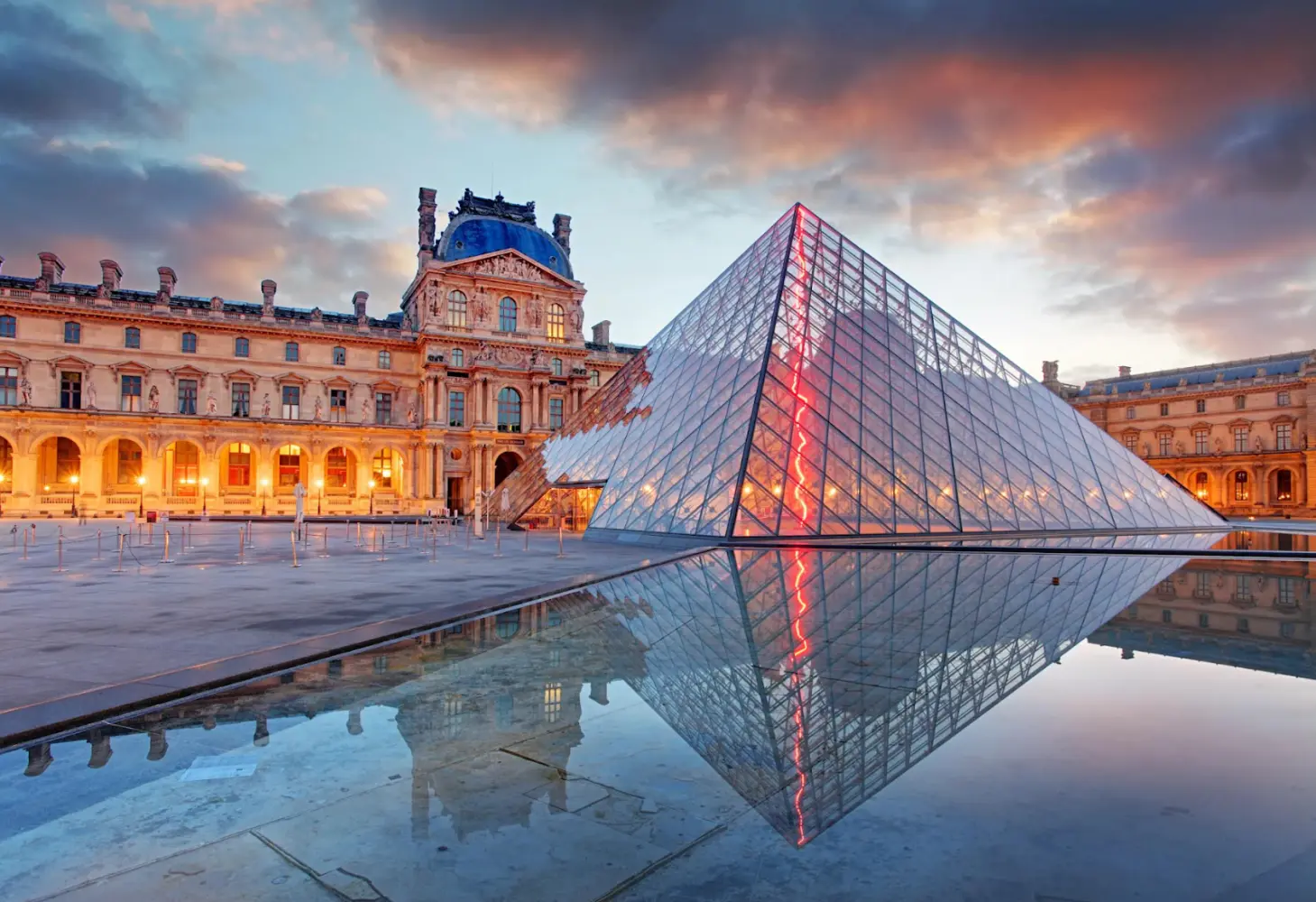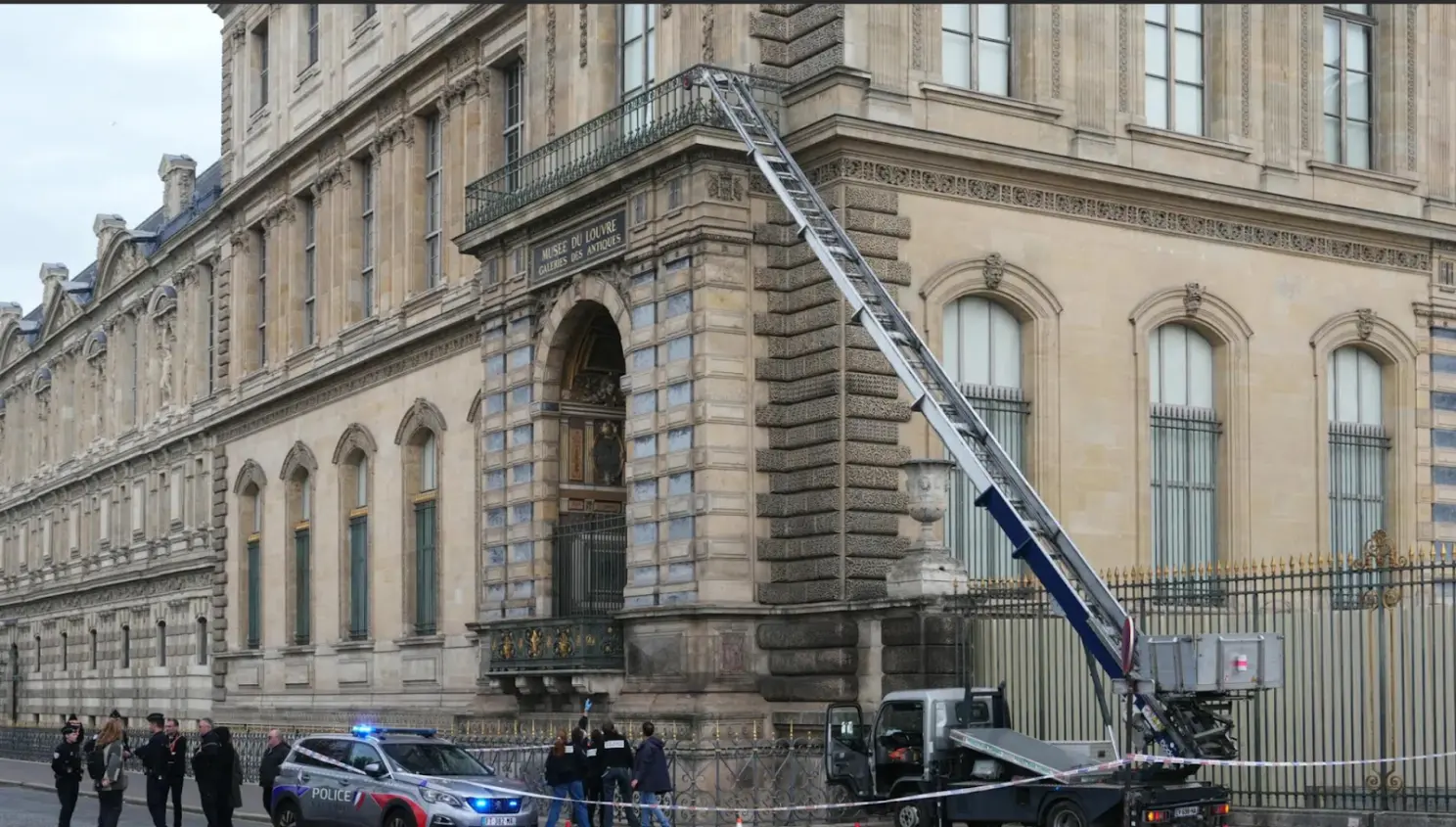Cloudastructure Enters MSA with Affordable Housing Developer
CSAI News
READ NOW
Blog

By James McCormick James is the CEO of Cloudastructure (Nasdaq: CSAI). He has over 30 years of experience including CEO, CFO and COO positions at public and private companies such as LTA Research, GES (acquired by Kimball Electronics NASDAQ: KE), Crossing Automation (acquired by Azenta NASDAQ: AZTN) and General Magic. Business Advisor to emerging companies and instrumental in raising over $1B in funds via IPO’s, sales to strategic investors, VC’s and securities sales through capital markets.

Last week, people all over the world were in disbelief that thieves had executed an “Ocean’s Eleven” reminiscent heist at the Louvre Museum in Paris and stolen jewelry worth more than a hundred million dollars.
The audacious theft was committed in broad daylight in front of employees and visitors to the museum. The method was straight out of the movies: a construction truck, complete with an electric hoist, enabled the thieves to boost themselves above multiple layers of traditional security, land on a balcony, cut the glass and enter the building. Alarms only triggered once they’d breached the window, because the only exterior camera didn’t cover that balcony. Power tools were then used to both breach the display cases and threaten staff and visitors.
Everyone was shocked that the world’s most famous museum could be so easily breached. Everyone, I should say, except those of us in AI security. The honest truth is traditional security measures are still everywhere, even at the most valuable properties in the world. And those security measures have been overwhelmingly ineffective at stopping crime…well, ever.
Let’s start with the surveillance. The Louvre acknowledged they maintain extensive surveillance, and it was operational, however the hardware was long out of date and the coverage inadequate. Surveillance cameras tend to be out of sight and therefore out of mind. Almost half of all businesses admit they only replace or add new cameras after a breach. The last theft from the Louvre occurred in 1998, so it’s possible some of the cameras were that old. They’re no exception. And yet, what other hardware do you have from the 1990’s, and still expect to perform daily?
Then there’s the method of processing the data from those cameras: live guards still monitor those feeds. On average, a human guard can only watch six feeds before errors begin to accrue. Time also plays a factor: over a period of hours, guards fatigue, and the mistakes increase again. It’s not the guards’ fault - human brains are designed to go to sleep from repetitive monotony. Even the best guards at the most famous art museum in the world cannot possibly monitor that many feeds effectively.

Inside the museum, alarms went off only once the perpetrators were inside. That’s all alarms do: announce crime. They do not stop it, and if your alarms are synched, they will not even point you in the direction of the breach. Three precious minutes of a seven minute heist were lost before police were called. Guards missed the opportunity to get to the balcony and confront the thieves there, away from visitors and the jewels.
Finally, there’s the challenge of hiring adequate guards, both in volume and expertise, capable of defending a museum full of priceless art. Institutions worldwide face chronic staffing challenges with guards due to low pay and terrible hours for a high risk job. And yet hiring more capable guards in the numbers necessary to defend life and property with the tools as they are is financially infeasible for almost every organization.In the United States, the Bureau of Labor Statistics reported that private security roles have high turnover rates and are among the most difficult to staff positions nationwide (BLS, 2024). Security professionals face physical risks and liability, yet the compensation and working conditions often fail to match the responsibility.
For 30 years, security has limped along in the fashion: reactive to crime. The Louvre knew there was a better solution, and they had a plan. But they kept putting it off, because other budgetary matters took priority. They are the rule, not the exception.
Of course, cameras have come a long way since the 1990s—analog gave way to IP, resolution jumped from 480p to 4K, and night vision became standard. But the real transformation in security came when DVRs and NVRs were replaced by cloud-based AI surveillance platforms.
AI is built for what humans can’t sustain: it can process hundreds of video feeds at once—without blinking, getting tired, or glancing at a phone. It automatically sorts, indexes, and analyzes footage, flagging anomalies… like an unscheduled construction truck parked near a restricted area.

That’s where intelligent monitoring reshapes how guards are deployed. Instead of passively watching endless feeds, trained guards now respond only to verified alerts—focusing their expertise where it matters most. Had the Louvre implemented such a system, the AI could have identified the suspicious vehicle early, prompting guards to check the scene and alert police. Possibly even before the intruders ever breached the balcony.
This is the power of real-time situational awareness: turning video from a passive record into actionable intelligence, reducing reaction times from minutes to seconds, and helping protect both people and property without unnecessary risk.
The Louvre heist is a wake up call. Look up. Check out your surveillance cameras - if you haven’t considered them since they were installed, it’s time. If someone in your organization has already done that and gone to the trouble of putting a proposal together, call them in. There’s no excuse not to do that, because we’ve all had this wake up call.
You can save money with the shift, but that isn’t the primary reason. Saving lives is. We were very fortunate that no one lost their lives at the Louvre. But there are lives lost in parking lots across the U.S. every day that AI surveillance and intelligent monitoring could save.
The lesson is clear: as threats evolve, our approach to safeguarding people, property, and institutions must evolve too.






%20(1)-min.webp)